In April 2022, the Maryland-National Capital Region Emergency Response System (MDERS) culminated an eight-month effort in partnership with the Prince George’s County Police Department (PGPD) to plan and conduct a series of exercises focused on the department’s response to an active shooter incident evolving into a barricaded suspect.
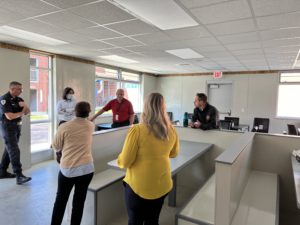 Planning efforts for this exercise cycle began in September 2021 for two exercises: a discussion-based, tabletop exercise (TTX), and an operations-based, full-scale exercise (FSE). Throughout the planning process, MDERS conducted bi-weekly planning meetings with PGPD leadership to establish exercise objectives, develop exercise scenarios, address logistical concerns, formulate timelines, identify participants, and assess needed resources for a realistic exercise environment. The planning team outline four primary objectives of the exercise series:
Planning efforts for this exercise cycle began in September 2021 for two exercises: a discussion-based, tabletop exercise (TTX), and an operations-based, full-scale exercise (FSE). Throughout the planning process, MDERS conducted bi-weekly planning meetings with PGPD leadership to establish exercise objectives, develop exercise scenarios, address logistical concerns, formulate timelines, identify participants, and assess needed resources for a realistic exercise environment. The planning team outline four primary objectives of the exercise series:
- Evaluate Prince George’s County Police Supervisors and Command Staff’s ability to establish and maintain command and control.
- Analyze the Prince George’s County Police Department’s transfer of command from patrol to special operations response.
- Assess patrol officers’ ability to provide first responder initial care.
- Assess Prince George’s County Police Tactical Emergency Medical Services (TEMS) personnel’s ability to provide point of injury and patient care, and extrication of patients.
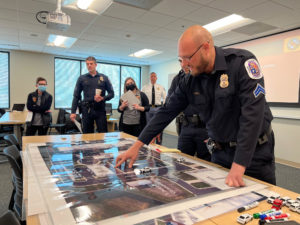 On March 2, 2022, PGPD conducted the first exercise utilizing the MDERS Tabletop In A Box toolkit. This discussion-based exercise allowed participants to work through three, distinct scenarios using a “crawl, walk, run” philosophy. This philosophy introduces increasingly complex elements allowing participants to progressively become familiar with the scenario and examine more intricate concepts. Twenty-two officers worked through these scenarios on an aerial-view map of the incident location using simulated models of real-world resources.
On March 2, 2022, PGPD conducted the first exercise utilizing the MDERS Tabletop In A Box toolkit. This discussion-based exercise allowed participants to work through three, distinct scenarios using a “crawl, walk, run” philosophy. This philosophy introduces increasingly complex elements allowing participants to progressively become familiar with the scenario and examine more intricate concepts. Twenty-two officers worked through these scenarios on an aerial-view map of the incident location using simulated models of real-world resources.
On April 13th, 2022, the exercise cycle reached its capstone with a six-hour, full-scale exercise at PGPD’s Public Safety Firearm and Tactical Training Complex in Upper Marlboro, Maryland. The planning team purposefully selected this 160,000 square foot facility as it allowed exercise participants to train in a realistic environment with commercial and residential buildings, as well as provided a controlled area of play monitored closely by PGPD personnel for the safety of all exercise participants.
 The FSE consisted of two scenarios designed to measure any training gaps between patrol officers and the teams who have received additional specialized training. The first scenario began with an active threat incident inside a restaurant that transitioned into a suspect fleeing and barricading inside a nearby apartment. In addition to patrol officers, this scenario necessitated the involvement of PGPD’s Conflict Negotiations Team, Special Operations Division, Aviation Division, and K-9 Unit.
The FSE consisted of two scenarios designed to measure any training gaps between patrol officers and the teams who have received additional specialized training. The first scenario began with an active threat incident inside a restaurant that transitioned into a suspect fleeing and barricading inside a nearby apartment. In addition to patrol officers, this scenario necessitated the involvement of PGPD’s Conflict Negotiations Team, Special Operations Division, Aviation Division, and K-9 Unit.
Upon completion of the first scenario, the exercise planning team reset the facility to conduct a second scenario, targeted at a more advanced response team. The second scenario consisted of an active threat moving from a restaurant to a facility with multiple rooms. In lieu of a barricaded suspect, officers were prompted to neutralize the active threat and clear the building.
In all, 143 PGPD officers participated in the exercise, which marks MDERS’s first ever full-scale exercise. While the formal after-action review process is ongoing, and expected to conclude in July 2022, preliminary feedback from exercise participants was overwhelming positively and numerous strengths and areas for improvement were identified by the evaluation team which will help PGPD continue to improve and expand upon their existing response capabilities.


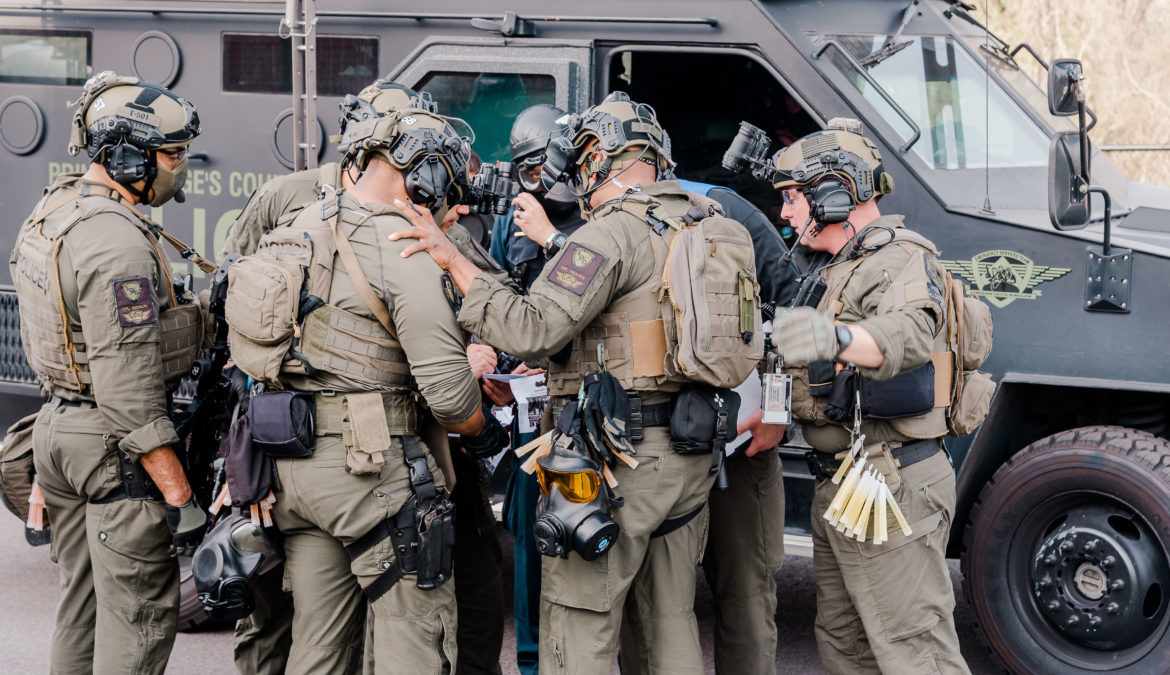
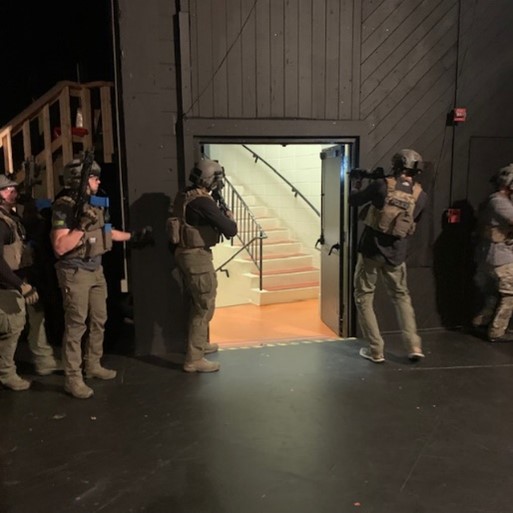
 Montgomery County Police Department (MCPD) has built a comprehensive training program for their special operations division (SOD) personnel. With support from the Maryland-National Capital Region Emergency Response System (MDERS), 18 officers from MCPD recently participated in a local offering of the Tomahawk Close Quarter Clearance (CQC) – Methodical Clearance Course. This training combines best practices and techniques for tactical entry and follow-on movement procedures.
Montgomery County Police Department (MCPD) has built a comprehensive training program for their special operations division (SOD) personnel. With support from the Maryland-National Capital Region Emergency Response System (MDERS), 18 officers from MCPD recently participated in a local offering of the Tomahawk Close Quarter Clearance (CQC) – Methodical Clearance Course. This training combines best practices and techniques for tactical entry and follow-on movement procedures. The training occurred across five disparate locations throughout Montgomery County. The distinctive floorplan of each facility allowed operators to maneuver in diverse environments. The instructors provided real-time feedback to each trainee and the unit’s performance in the following areas: two-four-person room entries, room pie methods, angles/cross-pan, multiple rooms, de-confliction, stairway/hallway movement, single/dual access, and team size movement.
The training occurred across five disparate locations throughout Montgomery County. The distinctive floorplan of each facility allowed operators to maneuver in diverse environments. The instructors provided real-time feedback to each trainee and the unit’s performance in the following areas: two-four-person room entries, room pie methods, angles/cross-pan, multiple rooms, de-confliction, stairway/hallway movement, single/dual access, and team size movement.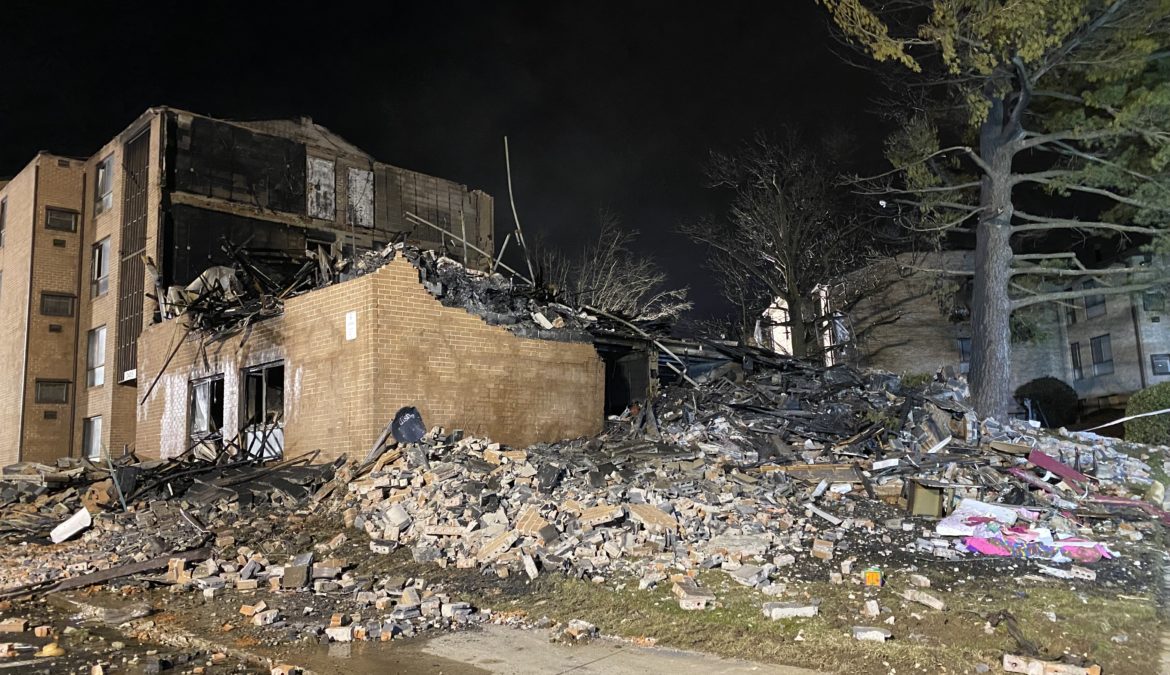
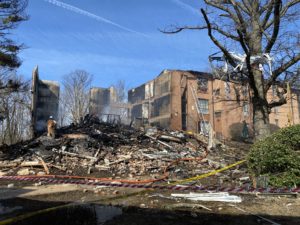
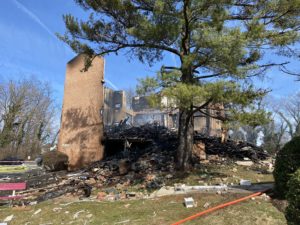 MCPD and MCFRS utilized their sUAS platforms to live-stream a 360-degree view of the incident scene to the Incident Command Post (ICP). Through the DroneSense software, the Incident Commander and other responders were able to remotely access and view this secured, live footage to aid in time-sensitive decision making. MCPD, in coordination with MCFRS, utilized mounted thermal imaging devices to identify “hotspots” within the structure fire that aided the prioritization of fire suppression activities to critical locations within the apartment complex. Simultaneously, MCPD deployed a secondary sUAS platform to conduct mapping missions, supported by specialized software, intended to aid the investigation process. Throughout the entirety of the Lyttonsville Road response operations, MCPD utilized a specially outfitted Chevrolet Tahoe, provided through MDERS, equipped with spare parts, extra batteries, chargers, and specialized tools to support sUAS flight operations.
MCPD and MCFRS utilized their sUAS platforms to live-stream a 360-degree view of the incident scene to the Incident Command Post (ICP). Through the DroneSense software, the Incident Commander and other responders were able to remotely access and view this secured, live footage to aid in time-sensitive decision making. MCPD, in coordination with MCFRS, utilized mounted thermal imaging devices to identify “hotspots” within the structure fire that aided the prioritization of fire suppression activities to critical locations within the apartment complex. Simultaneously, MCPD deployed a secondary sUAS platform to conduct mapping missions, supported by specialized software, intended to aid the investigation process. Throughout the entirety of the Lyttonsville Road response operations, MCPD utilized a specially outfitted Chevrolet Tahoe, provided through MDERS, equipped with spare parts, extra batteries, chargers, and specialized tools to support sUAS flight operations.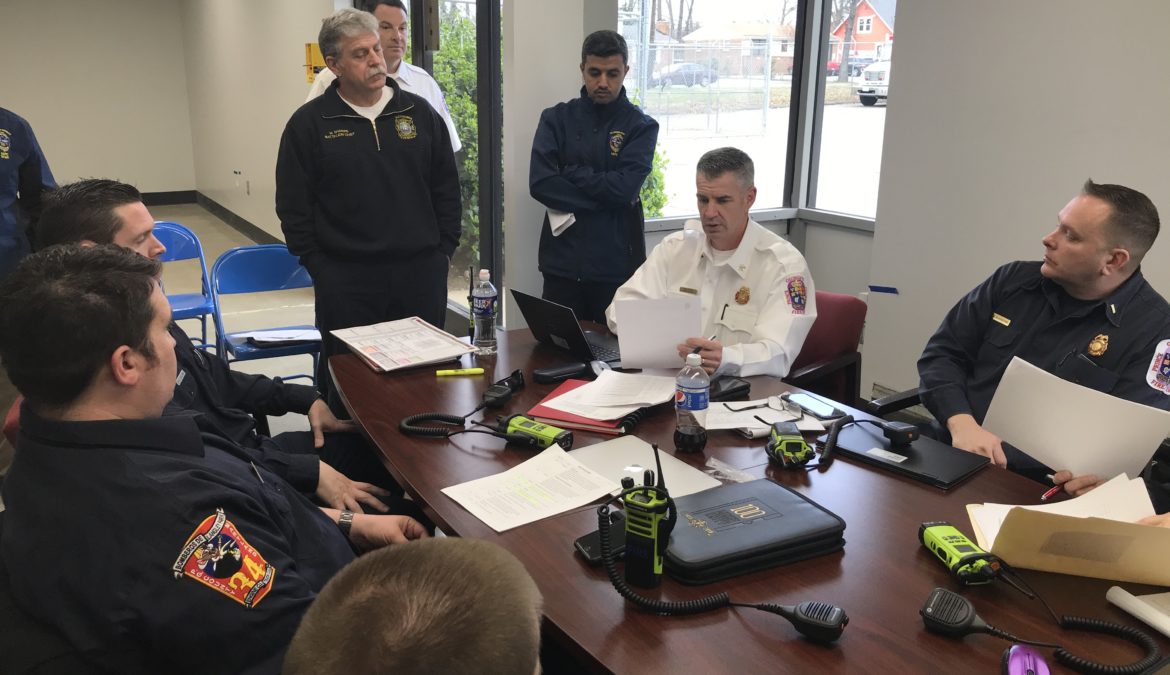


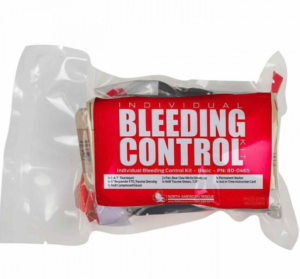 The PATC kits, found in all Montgomery County public high schools, are one component of the larger PATC program administered by the Maryland-National Capital Region Emergency Response System (MDERS). The PATC program aims to empower community members throughout Prince George’s and Montgomery Counties to respond to life-threatening blood loss, or other common forms of trauma, through the deployment of medical equipment, training, and other educational resources. Currently, MDERS and its stakeholders are focused on the continued proliferation of PATC kits throughout government buildings and other public facilities across the Maryland-National Capital Region.
The PATC kits, found in all Montgomery County public high schools, are one component of the larger PATC program administered by the Maryland-National Capital Region Emergency Response System (MDERS). The PATC program aims to empower community members throughout Prince George’s and Montgomery Counties to respond to life-threatening blood loss, or other common forms of trauma, through the deployment of medical equipment, training, and other educational resources. Currently, MDERS and its stakeholders are focused on the continued proliferation of PATC kits throughout government buildings and other public facilities across the Maryland-National Capital Region.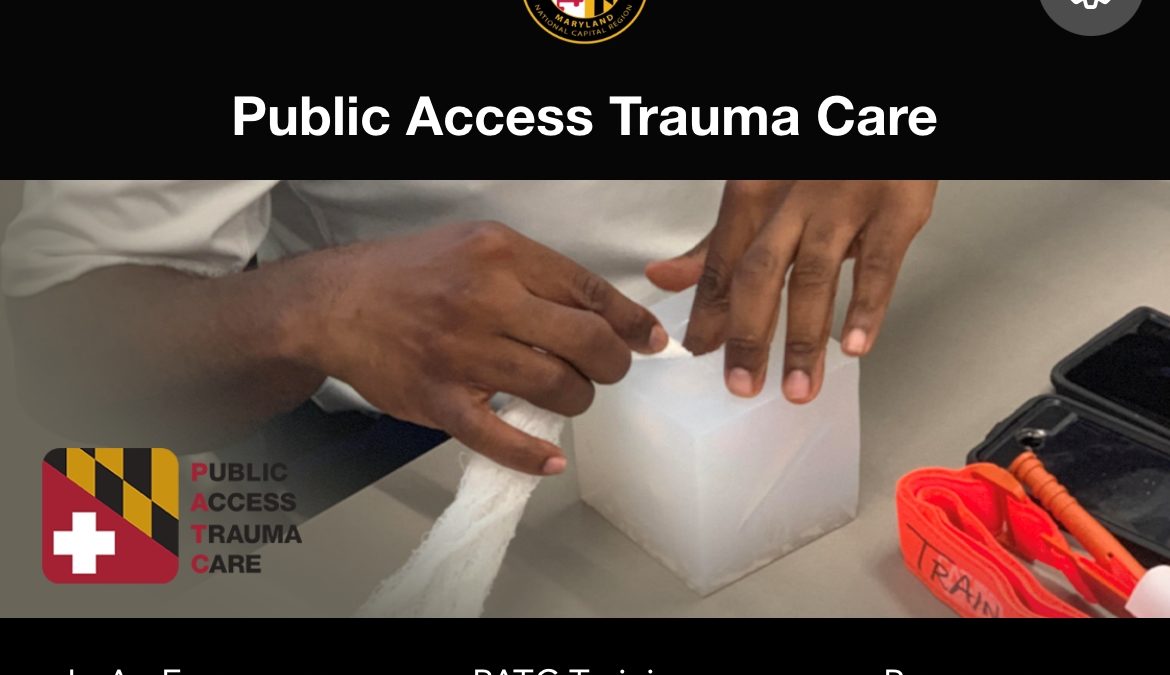
 In an Emergency
In an Emergency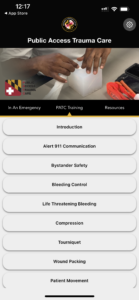 PATC Training
PATC Training Resources
Resources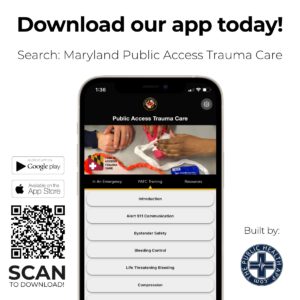
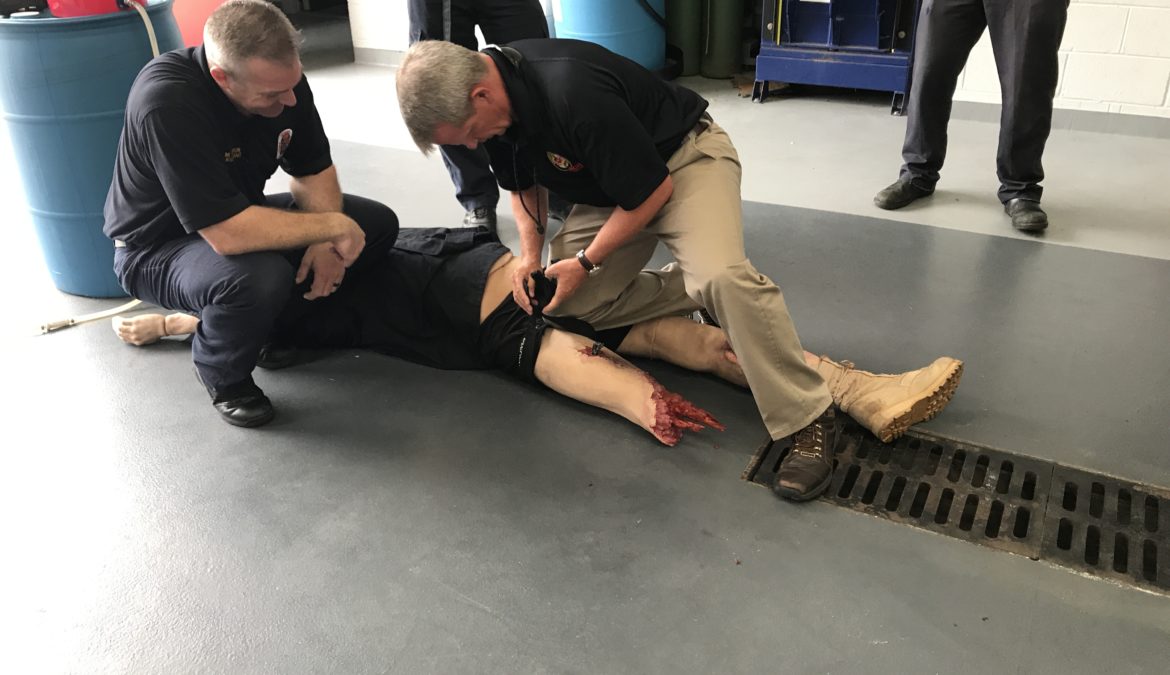
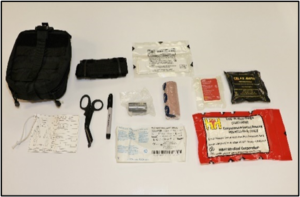


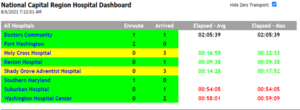
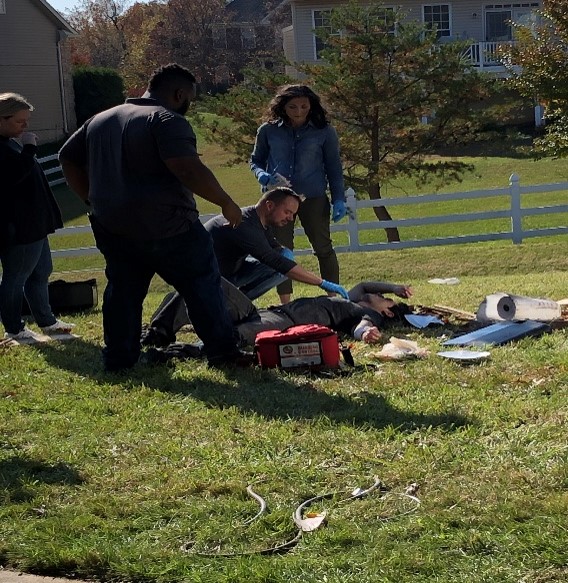
 The videos show the proper techniques and tools to treat life-threatening injuries using the equipment and supplies provided in the PATC kits. Students learn how to accurately identify the type and extent of an injury, how to render aid, and which bandages and supplies to use. The five training videos teach individuals how to apply a chest seal, apply a tourniquet, pack a wound, apply direct pressure, and maneuver a victim into the recovery position. Each video demonstrates the application of a skill with detailed narration explaining each step taken by a citizen responder.
The videos show the proper techniques and tools to treat life-threatening injuries using the equipment and supplies provided in the PATC kits. Students learn how to accurately identify the type and extent of an injury, how to render aid, and which bandages and supplies to use. The five training videos teach individuals how to apply a chest seal, apply a tourniquet, pack a wound, apply direct pressure, and maneuver a victim into the recovery position. Each video demonstrates the application of a skill with detailed narration explaining each step taken by a citizen responder.
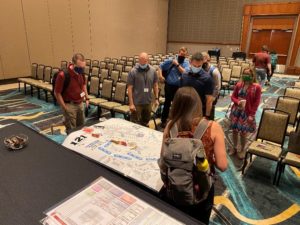 The MDERS Tabletop in a Box program is a coordinated effort with stakeholder agencies to provide a portable Incident Command System (ICS) training tool. The Tabletop in a Box program includes pre-scripted exercises, manipulatives, and maps of target hazard locations within their area of jurisdiction. This programs main tool is a portable box containing all materials required to run a hybrid exercise. This approach provides stakeholders with a forum to discuss, evaluate, and deconflict their response policies and procedures in a collaborative environment.
The MDERS Tabletop in a Box program is a coordinated effort with stakeholder agencies to provide a portable Incident Command System (ICS) training tool. The Tabletop in a Box program includes pre-scripted exercises, manipulatives, and maps of target hazard locations within their area of jurisdiction. This programs main tool is a portable box containing all materials required to run a hybrid exercise. This approach provides stakeholders with a forum to discuss, evaluate, and deconflict their response policies and procedures in a collaborative environment.